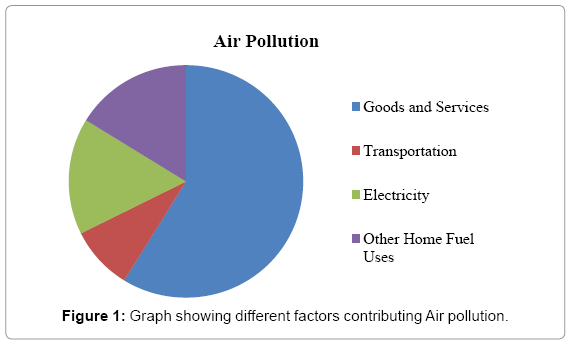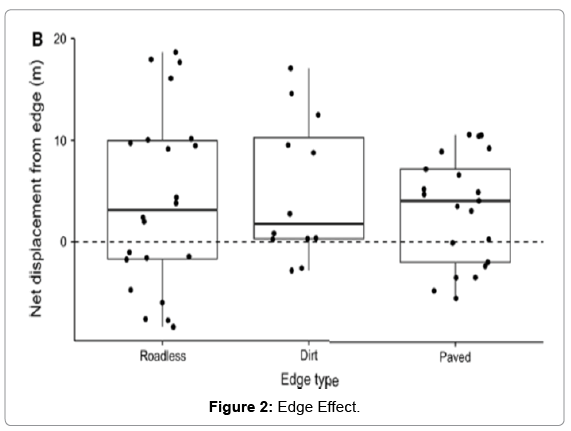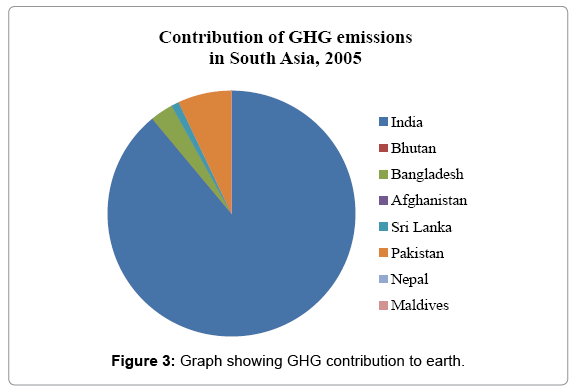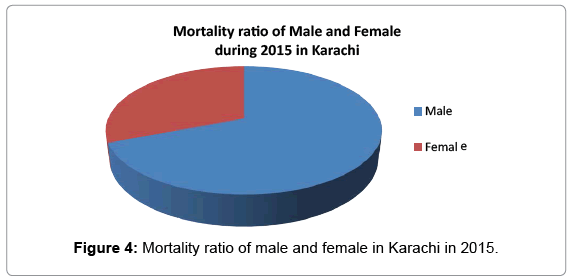Impact of Roads on Human Ecology
Received: 15-May-2018 / Accepted Date: 07-Jun-2018 / Published Date: 14-Jun-2018 DOI: 10.4172/2573-458X.1000155
Keywords: Roads; Air population; Temperature; Edge effect; Heat effect; Greenhouse gases
Introduction
According to sixth census held in Pakistan during 2018 concluded about 207,774,550 the total population of Pakistan and it is increasing 2.4% annually. This rapid increase in population pressure leads to the use of vehicle for transportation as well. Being main source of transportation, a tremendous increase in roads has been observed for our economy [1]. However, very diverse effects are linked with their usage including both direct and indirect effects. These may include the loss and degradation of habitat, incursion of weeds, diseased and feral animals, and direct mortality of wildlife due to accidents with vehicles, disruption of movements due to the creation of barriers, altered microclimatic conditions and changes to the acoustic environment. As far as indirect effects are concerned it includes artificial light and noise pollution [2]. In this review the discussion is about effects of roads on human economy, health and social factors either directly or indirectly. What are their consequences and what kind of precautions should be consider to eliminate these hazardous effects.
Mortality due to road accidents
A survey conducted based on the annual mortality rates of animal fauna due to road accidents. The drastic increase in their mortality has been observed in different areas of Pakistan [3]. According to a study conducted in 2014 from October to November in Bhavnagar city and its nearby areas. About 35 major animal species are found to be the serious victims. Major share of this mortality is the mammalian specie including about 11 animal species following, 12 reptile species, 9 bird species and 2 amphibians except striped hyena in mammals and red send boa in reptiles all of them are least concern [4]. This indicates that significant loss of our wildlife has been observed due to road accidents every day [5].
Air pollution
Air pollution is a major threat for developing countries in Asian world including Pakistan. In Pakistan inappropriate use of resources causes the air pollution and become the source of spread of substances like aerosols production, lead toxicity, asthma, and greenhouse gas accumulation [6]. Punjab is the main industrialized province of Pakistan and contributing most in the Air pollution. Various factor contributing to air pollution in these areas including Transportation, Electricity, Home fuel usage, different sort of goods of home uses. Pie graph showing different percent contributions of different sources in Pakistan [7] (Figure 1). These different factors increases the concentration of different heavy metals such as Zinc, Lead, Copper, Nickel, Chromium, Cobalt and Cadmium etc. it also includes many trace metals such as Zinc, Lead, Mn, Cu, Cr, Ni, Co, and Cd [8].
Roads situation of Islamabad, Faisalabad and Peshawar are of good condition fully paved and eco-friendly material is used in these roads. Lahore and Quetta are industrial city so road situations are quite pathetical. While in Gujranwala the only problem with roads is the Brick kiln. All of these roads are constructed in the most populated area so density is much higher. But the length of roads is quite variable depending upon the area constructed. Transportation means the use of different vehicles. According to estimation the number of vehicles in Pakistan has increases from 2 million to 10.6 million in the last 20 yrs [9]. Average annual usage of vehicles has increases 8.5% from 1991 to 2012. Due to increase in transportation use and vehicle there is an increase in pollutant particles. Particulate matter 10 and 2.5 are very important in this case and they have their size less than 10 and 2.5 respectively [10] (Table 1). These factors have very versatile and hazardous effect on human ecology including respiratory and immunological disorders [8].
| CITY | SOURCES | PM10 | PM2.5 |
|---|---|---|---|
| Lahore | Biomass burning, Diesel engines, Residual fuel oil, combustion | 336 | 194 |
| Quetta | Industrial and residential sources of Quetta | 126-709 | 104-222 |
| Gujranwala | Brick Kiln, Road Traffic | 5190 | - |
| Peshawar | Road Traffic | 720 | 110 |
| Islamabad | Road Traffic | 709 | - |
| Faisalabad | Road Traffic | 3477 | - |
Table 1: Particulate matter concentration (ugm-3) in different cities of Pakistan [24].
Edge effect
Edge effect is the change in population number due to habitat loss. Roads are disturbing the population of many animals by affecting their habitats, breeding and nesting behavior [9,10] in various ways. According to plethora of studies concluded that noise pollution causes the disturbance in breeding behavior [11]. While, nest placement by birds, home ranges of many animals is disturbing due to increasing edge effect of roads. Breeding sites of birds and territories increases net displacement of animals from their site of activity. However, this sort of habitat loss increases the intraspecific and interspecific competition among individuals leading to huge loss of wildlife in all developing countries. NaCl used in the road construction may also end up with same results [12,13]. The road edge consists of canopies (Figure 2). Though, Canopy opening size greatly affects the behavior of living animals. These variations in the canopy sizes are due to deforestation and habitat loss due to road constructions [14-16]. However, Edge effect causes the mobility of animals from that area because all of the specimens avoid roads edges because of higher noise effect, dust pollution and etc. [15-18]. There are many consequences of edge effects such as dirt; paved, roodless the response of specimen to these types of edges varies. The data about the rat like mammal species is offered in the boxplot above in which 0 presents its occurrence near to forest [19].
Temperature effect
Every individual has its own surviving temperature ranges. High increase in the vehicles and the emission of different gases increases the temperature of atmosphere gradually [18-30]. Ozone depletion and elimination of aerosols from different industrial plants contributes to increase in green house effects [19,27,31]. In Pakistan the total contribution towards greenhouse effect is 7% of total Green House Gases (GHG). India contributes about 89%, Maldives 0%, Nepal 0%, Sri Lanka 1% and Bangladesh 3%. This pie graph shows the contribution of GHG emissions in South Asia during 2005 [17,20] (Figure 3). Heat increases the effects of thermoregulatory reaction in our homeostasis [22]. Though, heat wave travels and become a source of many diseases which may leads to number of mortalities. However, an increase in heat causes heat stroke which may leads to many diseases [23,29]. Karachi is the most densely populated area of Pakistan and faces the problem of heat increase due to high traffic emissions [24]. During 2015 the temperature of Karachi is above 40°C and maximum highest temperature recorded is about 45°C. Mortality ratio of male is (69%), age greater than 50 years (74%) and homeless or living in home with limited electricity and water (60%) [25]. Plethora of investigations describes that patients at that area are facing the problem of dehydration having all the sign of clinical dehydration including flaccid skin, dried mucus membrane [26]. Other findings diagnose pneumonia. Moreover, malaria parasite is also detected in peripheral smear [27]. In addition to this, clinical symptoms of confirmed high body temperature, breathing rate, shock index and decreased conscious level and significantly lower diastolic blood pressure had also been observed in no survivors [29]. The data of Emergency Department of Indus Hospital of 150 patients from 17th-23rd June, 2015 tells us that dead patients have very low diastolic blood pressure, higher median respiratory rate rate, pulse rate, length of stay in emergency, shock index and low oxygen saturation. These finding are based on confidential clinical reports [28,29].
Material and Method
The data pertaining to this research was obtained from the various relevant journals, books, periodic, proceedings of conferences and other published materials (Figure 4).
Conclusion
We can’t deny the importance of roads to our society so we have to use certain preventive measures to improve quality of roads. We have to use eco-friendly vehicles less contaminating the air. There should be proper investigation for the issuance of license to drivers and heavy fine should be charged for rough driving. Elimination of vehicles containing pollutants should be done. We should encourage and facilitate pedestrians and cyclers, so that less heat accumulates in air. In the same way, there should be proper rules and regulations for good construction of roads.
Recommendation
To avoid side effects of roads we should use fewer amounts of vehicles and walk more. We should use effective training programs for drivers to avoid accidents. There should be plantation of more tress. There are some effective programs to help wildlife. Construction of roads should be under check and balance condition. Usage of low sulfur oil should be practiced as it is practiced in Karachi. Different kind of overpass and underpasses should be developed to avoid road traffic injuries. The overpasses include Land bridge, Overpass, Canopy bridge, Glider pole and different Local traffic management plans and different underpasses including Culvert, Tunnel, Bridges.
Acknowledgement
I acknowledge all my teachers and friends and other volunteers to help me in this review.
References
- Tikka PM, Harri H, Piia SK (2001) Road and railway verges serve as dispersal corridors for grassland plants. Landscape Ecol 16: 659-666.
- Jaeger JAG, Bowman J, Brennan J, Fahrig L, Bert D, et al. (2005) Predicting when animal populations are at risk from roads: an interactive model of road avoidance behavior. Ecological modelling 185: 329-348
- Gibbs JP and Shriver WG (2002) Estimating the effects of road mortality on turtle populations. Conservation Biology 16: 1647-1652.
- Solanki D, Beleem I, Kanejiya J, and Gohil B (2017) A study on animal-vehicle collision in Bhavnagar city and nearby area, Gujarat, India. Journal Of Entomology And Zoology Studies 5: 622-625.
- Vallero D (2014) Air Pollution's Impact on Ecosystems. InFundamentals of Air Pollution. Academic Press, Boston, 341-368.
- Hyder AA, Ghaffar AA, Sugerman DE, Masood TI, and Ali L (2006) Health and road transport in Pakistan. Public health 120: 132-141.
- Industrial Environmental Management in Pakistan (2011) Consulting report commissioned by the World Bank, Washington, DC.
- Jiménez E, Linares C, RodrÃguez LF, Bleda MJ, and DÃaz, J (2009) Short-term impact of particulate matter (PM2. 5) on daily mortality among the over-75 age group in Madrid (Spain). Sci Total Environ 407: 5486-5492.
- Faiza N, Weiguo J, Aijun Y, and Wenxing S (2017) Giant deforestation leads to drastic eco-environmental devastating effects since 2000; A case study of Pakistan. J Animal Plant Sci: 27: 1366-1376.
- Rajput MU, Ahmad S, Ahmad M and Ahmad W (2005) Determination of elemental composition of atmospheric aerosol in the urban area of Islamabad, Pakistan. J Radioanal Nucl Chem 266: 343-348.
- Pescador M, Peris S (2007) Influence of roads on bird nest predation: an experimental study in the Iberian Peninsula. Landscape Urban Plann 82: 66-71.
- Shorshani MF, Andre M, Bonhomme C and Seigneur C (2015) Modelling chain for the effect of road traffic on air and water quality: Techniques, current status and future prospects. Environ Model Softw 64: 102-123
- Parris K and Schneider A (2009) Impacts of traffic noise and traffic volume on birds of roadside habitats. Ecology and society 14: 29.
- Schuler MS and Relyea RA (2018) Road salt and organic additives affect mosquito growth and survival: An emerging problem in wetlands. Oikos 127: 866-874.
- Iglesias-Merchán C, Diaz-Balteiro L, and de la Puente J (2016) Road traffic noise impact assessment in a breeding colony of cinereous vultures (Aegypius monachus) in Spain. The Journal of the Acoustical Society of America 139: 1124-1131.
- Schmitt D, Rose MD, Turnquist JE and Lemelin P (2005) Role of the prehensile tail during ateline locomotion: Experimental and osteological evidence. Am J Phys Anthropol 126: 435-446.
- Youlatos D (2008) Locomotion and positional behavior of spider monkeys. Spider monkeys: Behavior, ecology and evolution of the genus Ateles. Cambridge University Press, 185-219.
- Oxley DJ, Fenton MB and Carmody GR (1974) The effects of roads on populations of small mammals. Journal of Applied Ecology 11: 51-59.
- Swihart RK and Slade NA (1984) Road crossing in Sigmodon hispidus and Microtus ochrogaster. Journal of Mammalogy 65: 357-360.
- Goosem M (2002) Effects of tropical rainforest roads on small mammals: fragmentation, edge effects and traffic disturbance. Wildlife Research 29: 277-289.
- Mc Laren AA, Fahrig L and Waltho N (2011) Movement of small mammals across divided highways with vegetated medians. Can J Zool 89: 1214-1222.
- Rico A, KindlmAnn P and Sedlácek F (2007) Barrier effects of roads on movements of small mammals. Folia Zool 56: 1-12
- Ascensão F, Lucas PS, Costa A and Bager A (2017) The effect of roads on edge permeability and movement patterns for small mammals: A case study with Montane Akodont. Landscape Ecol 32: 781-790.
- Vicario SJ, Okabajue R and Haltom T (1986) Rapid cooling in classic heatstroke: Effect on mortality rates. Am J Emerg Med 4: 394-398.
- Ghumman U and Horney J (2016) Characterizing the impact of extreme heat on mortality, Karachi, Pakistan, June 2015. Prehospital and disaster medicine 31: 263-266.
- Saleem SG, Ansari T, Ali AS, Fatima S, Rizvi MH and et al. (2017) Risk factors for heat related deaths during the June 2015 heat wave in Karachi, Pakistan. Journal of Ayub Medical College Abbottabad 29: 320-324.
-  Zeeshan N, Nasir MS,Nasir A, Saifullah, Farooqi ZR, et al. (2016) Air contamination and its impact on plants, humans and water of pakistan-a review. J Appl Environ Biol Sci 6: 32-39.
- Bischof R, Steyaert SMJG and Kindberg J (2017) Caught in the mesh: Roads and their network-scale impediment to animal movement. Ecography 40: 1369-1380.
- Manson RH, Ostfeld RS and Canham CD (1999) Responses of a small mammal community to heterogeneity along forest-old-field edges. Landscape ecology, 14: 355-367.
- Rytwinski T and Fahrig L (2012) Do species life history traits explain population responses to roads? A meta-analysis. Biological Conservation 147: 87-98.
Citation: Hamid Z, Malik MF (2018) Impact of Roads on Human Ecology. Environ Pollut Climate Change 2: 154. DOI: 10.4172/2573-458X.1000155
Copyright: © 2018 Hamid Z, et al. This is an open-access article distributed under the terms of the Creative Commons Attribution License, which permits unrestricted use, distribution, and reproduction in any medium, provided the original author and source are credited.
Share This Article
Recommended Journals
Open Access Journals
Article Tools
Article Usage
- Total views: 7044
- [From(publication date): 0-2018 - Apr 24, 2025]
- Breakdown by view type
- HTML page views: 6126
- PDF downloads: 918




